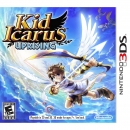the-pi-guy said:
Thanks, I'll try to keep that in mind. :) |
Well here's what I have found so far about the specs. The 3DS CPU seems to have an advantage over all other 4-core 1 GHz CPUs when used on a 1st party device like the 3DS, but if you use it on a 3rd party device it will have a lot of bugs & glitches you will never find. And it seems you can't underclock it any lower then 350 MHz a core. Anyways I hope this info does you more good then me, since I'm not that good about figuring out specs.
ARM11
Differences from ARM9
In terms of instruction set, the ARM11 builds on the preceding ARM9 generation. It incorporates all ARM926EJ-S features and adds the ARMv6 instructions for media support (SIMD) and accelerating IRQ response.
Microarchitecture improvements in ARM11 cores include:
- SIMD instructions which can double MPEG-4 and audio digital signal processing algorithm speed
- Cache is physically addressed, solving many cache aliasing problems and reducing context switch overhead
- Unaligned and mixed-endian data access is supported
- Reduced heat production and lower overheating risk
- Redesigned pipeline, supporting faster clock speeds (target up to 1 GHz)
- 64-bit data paths
JTAG debug support (for halting, stepping, breakpoints, and watchpoints) was simplified. The EmbeddedICE module was replaced with an interface which became part of the ARMv7 architecture. The hardware tracing modules (ETM and ETB) are compatible, but updated, versions of those used in the ARM9. In particular, trace semantics were updated to address parallel instruction execution and data transfers.
ARM makes an effort to promote good Verilog coding styles and techniques. This ensures semantically rigorous designs, preserving identical semantics throughout the chip design flow, which included extensive use of formal verification techniques. Without such attention, integrating an ARM11 with third party designs could risk exposing hard-to-find latent bugs. Due to ARM cores being integrated into many different designs, using a variety of logic synthesis tools and chip manufacturing processes, the impact of its register-transfer level (RTL) quality is magnified many times.[3] The ARM11 generation focused more on synthesis than previous generations, making such concerns be more of an issue.
[edit]Cores
There are four ARM11 cores:
- ARM1136[4]
- ARM1156, introduced Thumb2 instructions
- ARM1176, introduced security extensions[5]
- ARM11MPcore, introduced multicore support
PICA200
Specification
- 65 nm Single Core [7](max. clock frequency 400 MHz)
- Power consumption: 0.5-1.0 mW/MHz[2]
- Frame Buffer max. 4095×4095 pixels
- Supported pixel formats: RGBA 4-4-4-4, RGB 5-6-5, RGBA 5-5-5-1, RGBA 8-8-8-8
- Vertex program (ARB_vertex_program)
- Render-to-Texture
- MipMap
- Bilinear texture filtering
- Alpha blending
- Full-scene anti-aliasing (2×2)
- Polygon offset
- 8-bit stencil buffer
- 24-bit depth buffer
- Single/Double/Triple buffer
- DMP's MAESTRO-2G technology
- per pixel lighting
- procedural texture
- refraction mapping
- subdivision primitive
- shadow
- gaseous object rendering




















